Step Back in Time: Discover the Rich Heritage of Changan’s Sui and Tang Dynasty Ruins

An Essential Guide to Visiting Sui Dynasty And Tang Dynasty Changan City Ruins
In This Guide
- An Essential Guide to Visiting Sui Dynasty And Tang Dynasty Changan City Ruins
- The Rich History and Legends of Sui Dynasty And Tang Dynasty Changan City Ruins
- Main Highlights: What You Absolutely Can’t Miss
- Planning Your Visit: A Practical Guide
- Tickets: Prices, Booking, and Tips
- How to Get There: A Complete Transportation Guide
- Local Cuisine and Accommodation Nearby
- Frequently Asked Questions
- Final Thoughts on Your Trip
Exploring the remnants of history can be one of the most enriching experiences a traveler can have, and nowhere is this more profound than at the Chang’an City Site of the Sui and Tang Dynasties. Nestled in the heart of Xi’an, this archaeological treasure trove invites you to wander through the echoes of a city that once stood as a beacon of culture, trade, and power in ancient China.
Chang’an, known as Daxing during the Sui Dynasty, was a cosmopolitan hub, drawing visitors from far and wide along the Silk Road. The ruins tell a story of grand palaces, bustling streets, and a city meticulously planned, reflecting the grandeur of one of the world’s most influential capitals. This was a city where the East met the West, where ideas and goods flowed freely, and where the arts and sciences flourished under the auspices of enlightened rulers.
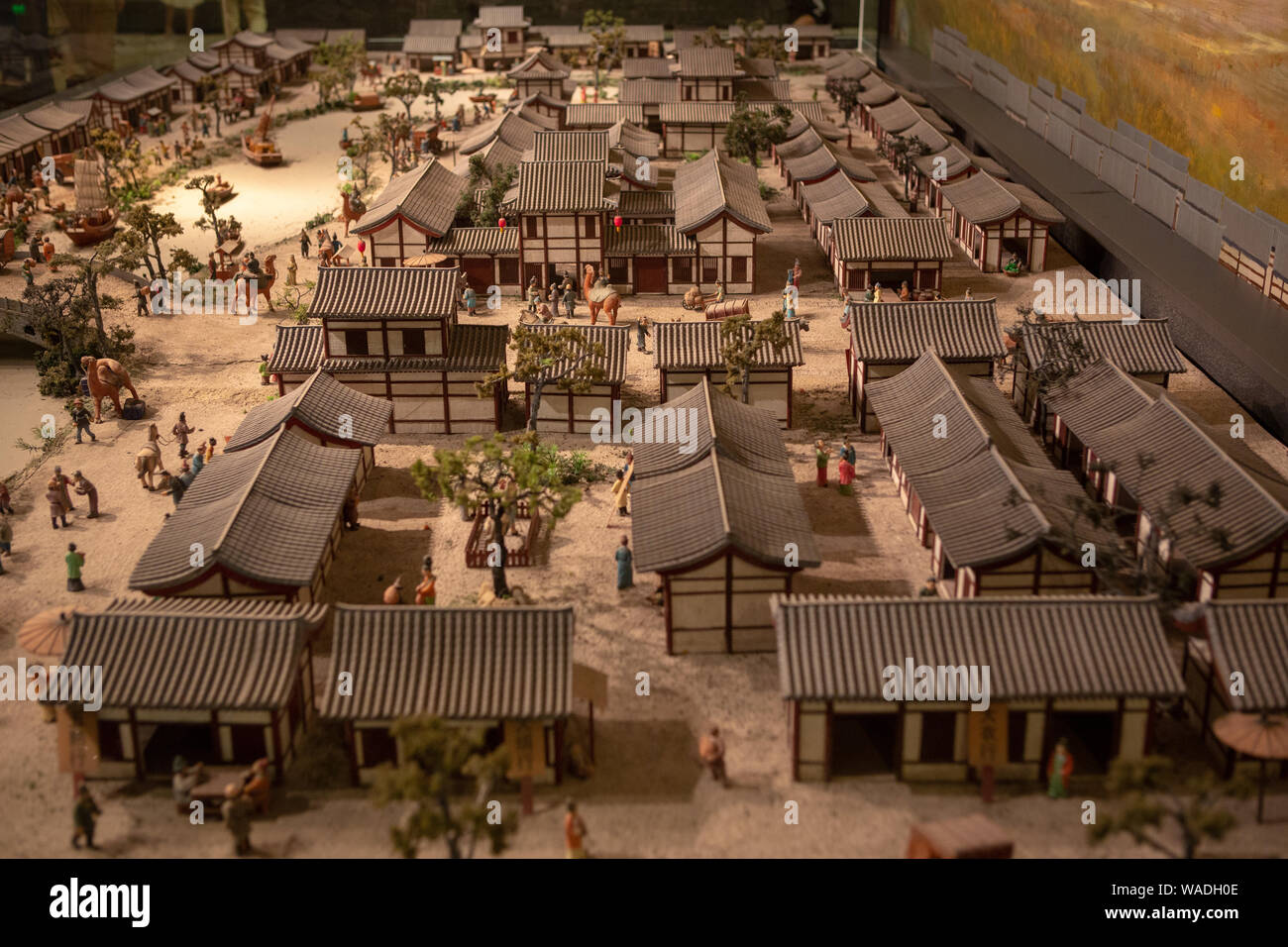
Sui_Dynasty_And_Tang_Dynasty_Changan_City_Ruins.
As you step onto the site, you’re not merely observing remnants of stone and earth; you are walking in the footsteps of emperors, scholars, and traders who shaped the course of history. The ruins of lavish palaces like the Daming Palace and the Xingqing Palace, along with the vast city walls and meticulously designed urban layout, offer a glimpse into the ingenuity and ambition of an era that laid the foundations for much of Chinese civilization.
This guide will take you through the essential aspects of visiting the Chang’an City ruins, ensuring that your journey through this ancient metropolis is as enlightening as it is unforgettable. Here, history is not just preserved; it comes alive, allowing you to connect with the past in a way that few other places can offer. Whether you are a history buff, an architecture enthusiast, or simply a curious traveler, the Chang’an City Site promises a rich tapestry of experiences waiting to be uncovered.
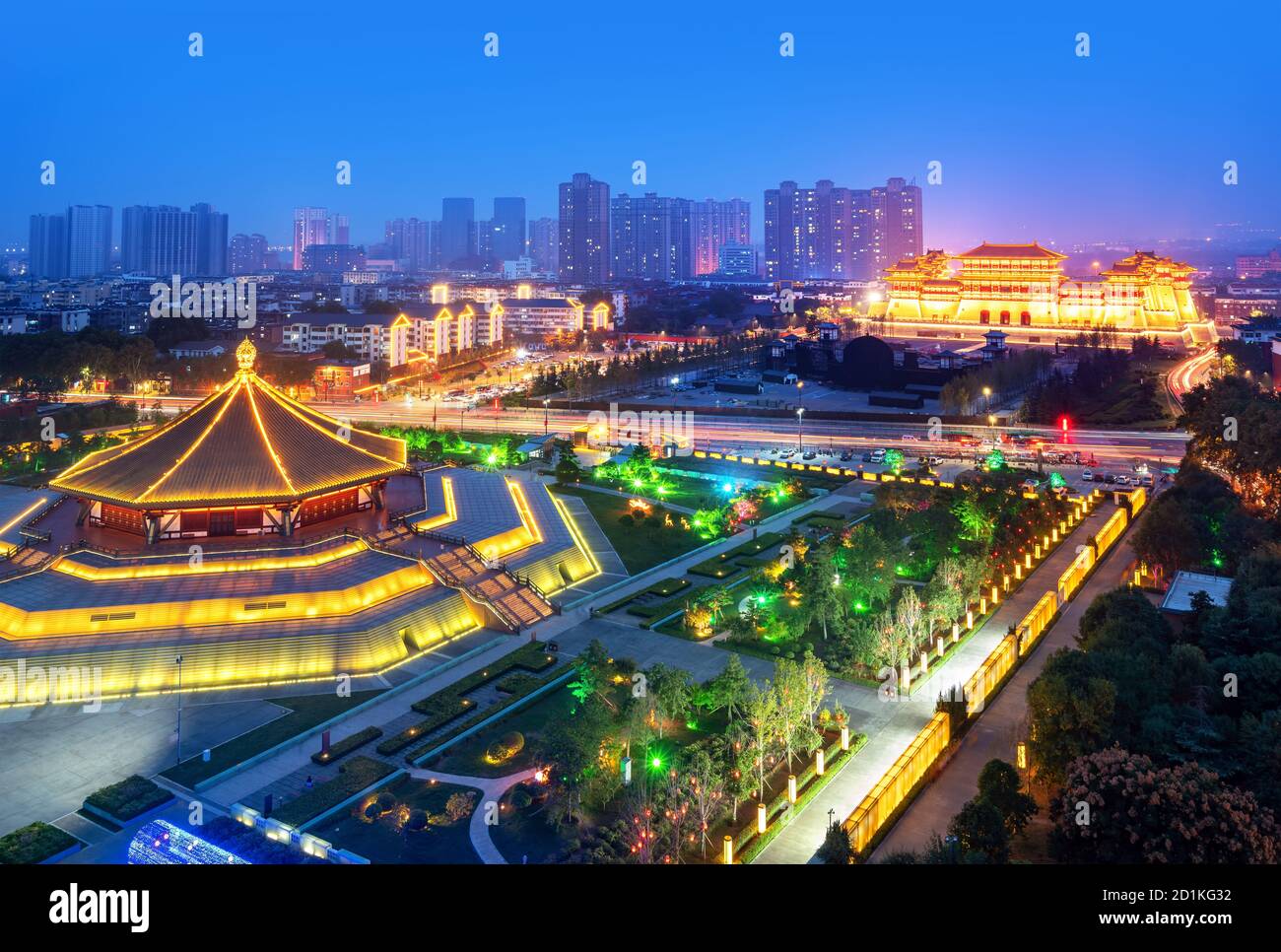
Sui_Dynasty_And_Tang_Dynasty_Changan_City_Ruins.
The Rich History and Legends of Sui Dynasty And Tang Dynasty Changan City Ruins
A Journey Through Time: The Sui and Tang Dynasties’ Chang’an City Ruins
Nestled in the heart of Xi’an, the Chang’an City Ruins, remnants of the Sui and Tang dynasties, echo with the stories of an era that shaped Chinese civilization. Once a bustling metropolis, Chang’an, known as Daxing City during the Sui Dynasty, was not just the capital but the very soul of cultural and economic exchange in ancient China.
Historical Significance
The Sui Dynasty (581-618 AD) laid the groundwork for what would blossom into one of the world’s most influential cities during the Tang Dynasty (618-907 AD). Chang’an was designed as an architectural marvel, inspired by the earlier city of Luoyang, yet boasting a more systematic layout. The city was divided into three main parts: the imperial city (Miyagi), the national city (Guocheng), and the residential districts.
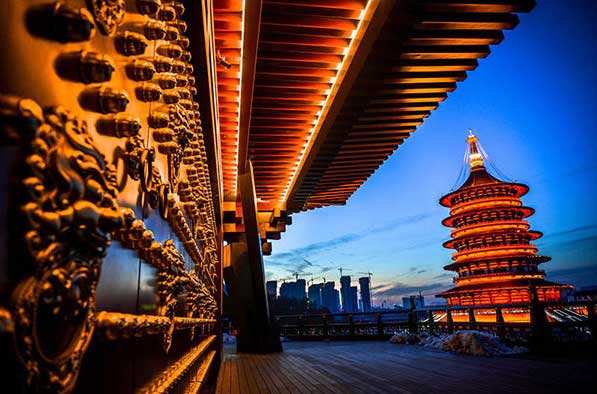
Sui_Dynasty_And_Tang_Dynasty_Changan_City_Ruins.
-
Daxing City: Established under Emperor Yang of the Sui, Daxing was characterized by its impressive city walls, wide streets, and a meticulously planned grid layout. It served as a political and cultural hub, attracting scholars, traders, and diplomats from across Asia.
-
Chang’an City: Renamed under the Tang Dynasty, Chang’an flourished into a cosmopolitan capital, renowned for its vibrant markets and international trade routes, particularly the Silk Road. The city became a melting pot of cultures, ideas, and innovations, making it one of the largest and most prosperous cities in the world at its peak.
Architectural Marvels
Among the remnants of this grand city are notable structures that tell tales of its past:
-
Daming Palace: Once the imperial palace, this vast complex was a symbol of Tang power and luxury, boasting exquisite gardens and intricate architecture. It was a site for grand ceremonies and gatherings of the elite.
-
Xingqing Palace: This residence of Emperor Xuanzong served as a cultural and artistic center, attracting poets, painters, and musicians, contributing to the rich tapestry of Tang culture.
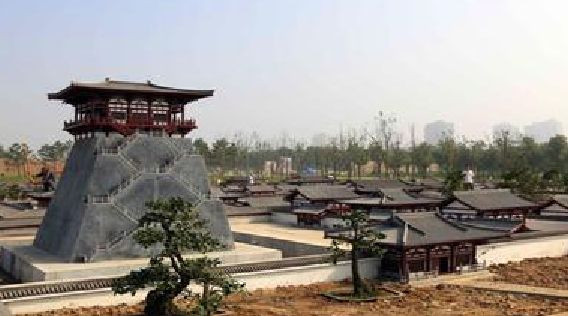
Sui_Dynasty_And_Tang_Dynasty_Changan_City_Ruins.
The ruins encompass not only royal palaces but also residential areas, where the orderly layout of streets and squares reflects the sophistication of urban planning during the era.
Legends and Cultural Heritage
The legends surrounding Chang’an add layers of mystique to its historical narrative. According to folklore, the city was home to notable figures such as the celebrated poet Li Bai and the legendary monk Xuanzang, who journeyed to India to bring back Buddhist texts. Their stories exemplify the intellectual and spiritual pursuits that thrived within the city’s walls.
-
The Tale of Xuanzang: His pilgrimage to India, filled with trials and adventures, symbolizes the quest for knowledge that characterized the Tang Dynasty, emphasizing the importance of cultural exchange.
-
Li Bai’s Poetry: Often referred to as one of China’s greatest poets, Li Bai’s verses capture the essence of Tang life, blending themes of nature, love, and longing, echoing through the centuries and drawing visitors to explore the landscapes that inspired him.
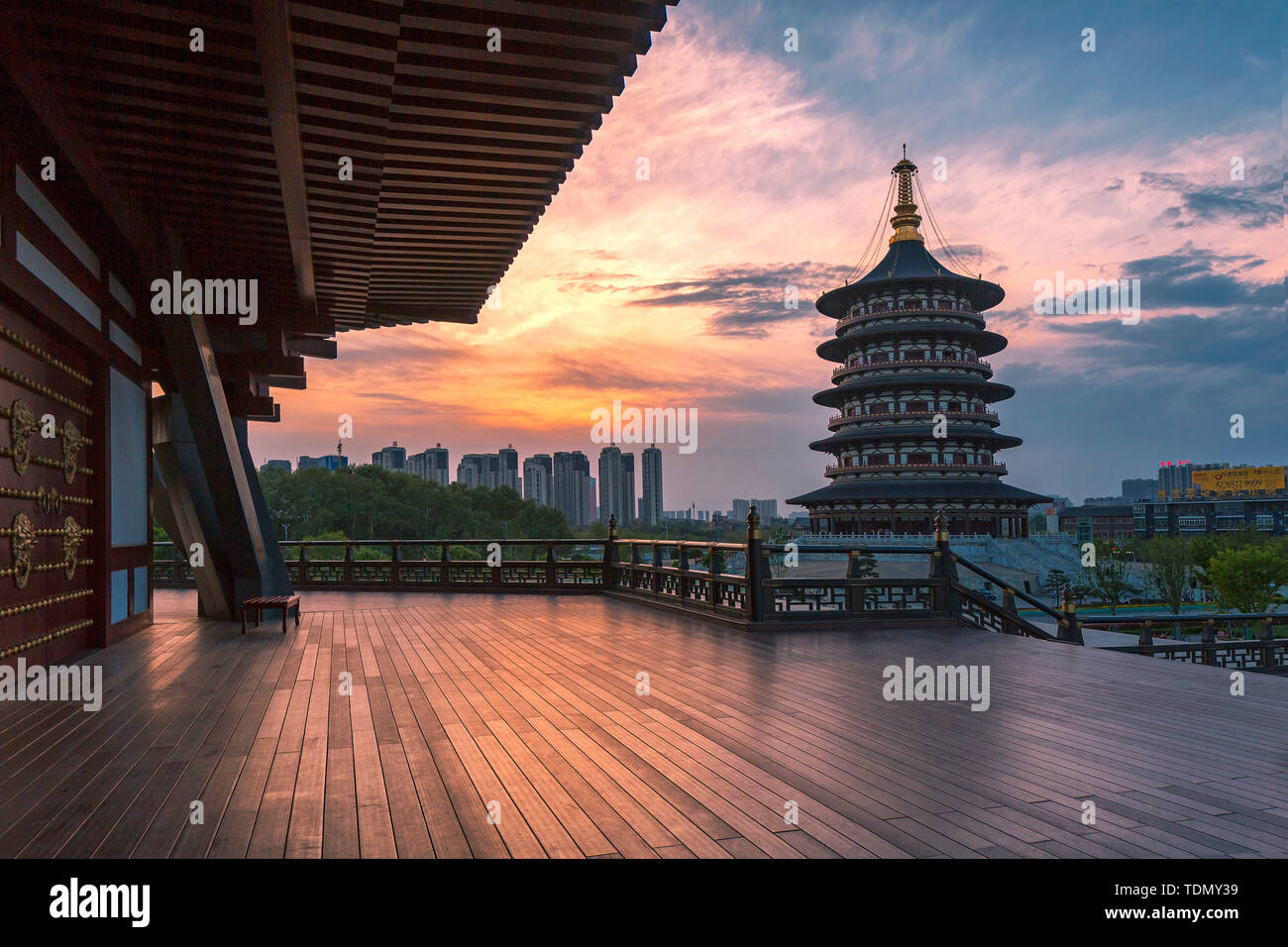
Sui_Dynasty_And_Tang_Dynasty_Changan_City_Ruins.
Visiting the Ruins
Today, the Chang’an City Ruins stand as a testament to the grandeur of the Sui and Tang dynasties. Visitors can stroll through the expansive site, where remnants of the city walls, palace foundations, and urban layout serve as a window into a vibrant past. The site allows for reflection on the profound impact these dynasties had on Chinese history and global culture.
As you wander through the ruins, imagine the bustling streets filled with merchants, scholars, and artists, all contributing to the vibrant life of Chang’an. The echoes of history resonate through the ancient stones, inviting you to delve deeper into the rich narrative of one of China’s most illustrious periods.

Sui_Dynasty_And_Tang_Dynasty_Changan_City_Ruins.
In conclusion, the Chang’an City Ruins are not merely archaeological remnants; they are a gateway to understanding the profound cultural heritage that shaped not only China but also the world. Embrace the stories, legends, and historical significance of this remarkable site as you explore its enduring legacy.
Main Highlights: What You Absolutely Can’t Miss
Discover the Rich Tapestry of Chang’an: Must-See Highlights
When exploring the enchanting ruins of the Sui and Tang Dynasties’ Chang’an City, you’ll find yourself stepping into a world that was once the pinnacle of culture, commerce, and architecture in ancient China. Here are the essential highlights to ensure your visit is both enriching and unforgettable.
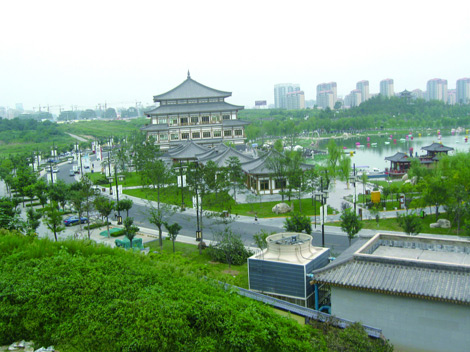
Sui_Dynasty_And_Tang_Dynasty_Changan_City_Ruins.
1. Daming Palace (大明宫)
Considered the heart of Chang’an during the Tang Dynasty, the Daming Palace was not just a royal residence but a symbol of imperial power. Its expansive grounds were designed to reflect the grandeur of the Tang era, featuring intricately laid-out gardens and majestic halls. Walking through the ruins, you’ll get a vivid sense of the scale and beauty that once defined this magnificent palace.
2. Xingqing Palace (兴庆宫)
Another significant imperial site, Xingqing Palace served as a retreat for Tang emperors. The palace was renowned for its stunning architecture and lush surroundings. As you wander through the remnants, envision the lavish banquets and cultural gatherings that once took place here, showcasing the dynastic glory that characterized the Tang era.
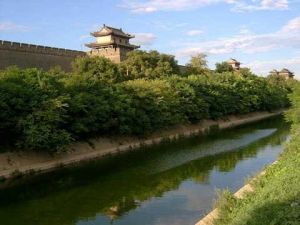
Sui_Dynasty_And_Tang_Dynasty_Changan_City_Ruins.
3. The City Walls and Moat
One of the most striking features of Chang’an is its impressive city walls, which served both defensive and administrative purposes. The walls, measuring 9-12 meters in width and 6 meters in height, still convey the architectural prowess of the time. The surrounding moat, 9 meters wide and 4 meters deep, adds to the city’s historical significance, offering insights into ancient urban planning and security measures.
4. Guocheng Residential Area
The layout of Guocheng reflects a meticulously planned urban environment. The neat grid of 14 north-south streets and 11 east-west streets, interspersed with 114 squares, illustrates the organized approach to city life in Tang Chang’an. This area exemplifies the daily life of its inhabitants, offering a glimpse into the social structure and community organization of the time.
5. Xuanwumen and Qinglong Temple
These ruins are significant gateways into the city, with Xuanwumen acting as a ceremonial entrance. Nearby, the remains of Qinglong Temple provide insight into the spiritual and cultural practices of the era. Both sites reflect the blending of secular and sacred life in Chang’an, showcasing how religion and governance coexisted.
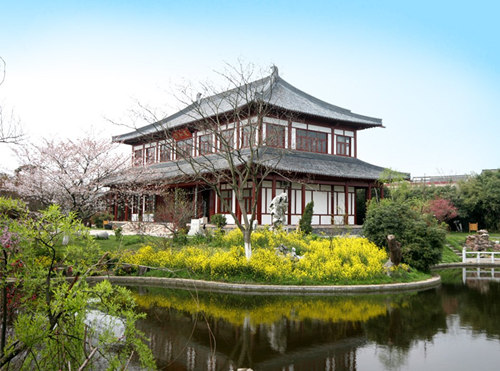
Sui_Dynasty_And_Tang_Dynasty_Changan_City_Ruins.
6. Archaeological Interpretations
As you explore the ruins, pay attention to the informative displays that offer context and interpretation of the archaeological finds. These insights will deepen your understanding of the social, economic, and political dynamics of one of the world’s largest cities at the time.
7. Scenic Walks and Photography
The site is expansive and offers numerous picturesque spots perfect for capturing the essence of ancient Chang’an. Take a leisurely stroll through the remnants of palaces and gardens, and don’t forget your camera to preserve the beauty of this historical landscape.

Sui_Dynasty_And_Tang_Dynasty_Changan_City_Ruins.
Conclusion
The Chang’an City Ruins of the Sui and Tang Dynasties stand as a testament to a remarkable chapter in Chinese history. Each highlight invites you to immerse yourself deeper into the cultural heritage of this ancient metropolis. Whether you’re an ardent history buff or a casual traveler, the stories whispered by these ruins will captivate your imagination and provide a profound appreciation for China’s rich past.
Planning Your Visit: A Practical Guide
Your Journey to the Heart of Ancient China
Exploring the Chang’an City Site of the Sui and Tang Dynasties offers a unique glimpse into the grandeur of one of history’s most significant metropolises. As you prepare for your visit to this archaeological gem in Xi’an, here’s everything you need to know for a fulfilling experience.
Getting There
Location:
The Chang’an City Ruins are located in the Weiyang District of Xi’an, approximately 5 kilometers from the city center.
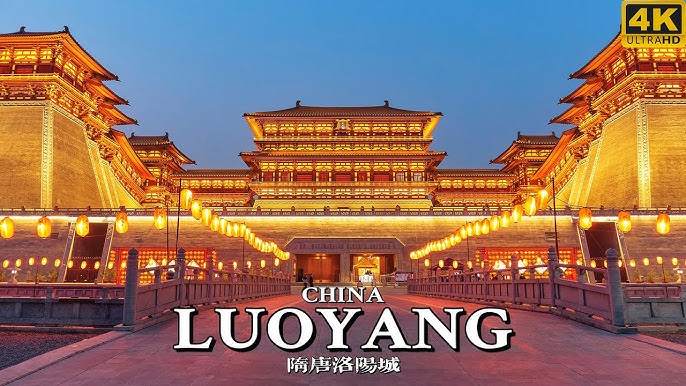
Sui_Dynasty_And_Tang_Dynasty_Changan_City_Ruins.
Transportation Options:
– Public Transit: Xi’an’s public transportation system is efficient and budget-friendly. Take Metro Line 1 and disembark at the Weiyanggong Station; from there, it’s a short taxi ride to the site.
– Taxis and Ride-Sharing: Taxis are readily available throughout Xi’an, and ride-sharing apps can provide convenient options for reaching the ruins.
– Walking/Biking: If you’re staying nearby, consider a leisurely walk or bike ride to enjoy the city’s atmosphere.
Opening Hours
The site is open 24 hours, allowing visitors to explore the ruins at their leisure, though early morning and late afternoon offer the best light for photography.

Sui_Dynasty_And_Tang_Dynasty_Changan_City_Ruins.
Admission Fees
Currently, there are no entry fees to access the Chang’an City Ruins, making it an excellent option for budget-conscious travelers. Always check for any updates on fees or regulations before your visit.
What to Expect
Highlights of the Site:
– Daming Palace and Xingqing Palace: These remnants showcase the imperial grandeur of the Tang Dynasty, reflecting its status as a cultural and political hub.
– City Layout: The ruins reveal a meticulously planned city with wide walls, well-defined residential areas, and organized streets, demonstrating advanced urban planning.
– Historical Significance: Chang’an was a melting pot of cultures, and walking through its ruins allows you to immerse yourself in a past filled with vibrant trade and diplomacy.
Recommended Time:
Allocate about 1 hour to wander through the site. This should give you ample time to take in the history and explore various sections without feeling rushed.
Nearby Attractions
While in the area, consider visiting these other historical sites:
– Xi’an City Wall: A well-preserved ancient fortification offering stunning views of the city.
– Muslim Quarter: A lively area filled with street food, markets, and cultural experiences.
– Big Wild Goose Pagoda: A landmark of ancient Buddhist architecture.
Tips for Your Visit
- Wear Comfortable Shoes: The site requires walking, so ensure you have comfortable footwear.
- Bring Water and Snacks: While there are eateries in the vicinity, it’s wise to stay hydrated and energized during your exploration.
- Respect the Ruins: As a historical site, it’s important to respect the integrity of the ruins and follow any posted guidelines.
Cultural Sensitivity
Engaging with the local culture and history comes with the responsibility of being respectful. Be mindful of your surroundings, engage with locals, and take the opportunity to learn more about Xi’an’s rich heritage.
Conclusion
A visit to the Chang’an City Ruins is not just an exploration of ancient architecture but a journey through the heart of a civilization that greatly influenced the course of Chinese history. With this guide in hand, you’re well-prepared to delve into the legacy of the Sui and Tang Dynasties. Happy travels!
Tickets: Prices, Booking, and Tips
When planning your visit to the Chang’an City Site of the Sui and Tang Dynasties, understanding ticketing options, prices, and booking tips can enhance your experience at this historically rich site. Here’s everything you need to know:
Ticket Information
-
Admission Price: As of 2023, entrance to the Chang’an City Site is typically around 30 RMB (approximately $4.50 USD). This fee grants access to the expansive ruins and allows you to explore the remnants of one of ancient China’s most significant capitals.
-
Discounts: Various discounts may apply for students, seniors, and children. Always check the official website or local resources for the latest information on eligibility and rates.
-
Opening Hours: The site is open 24 hours, providing flexibility for visitors. Early morning or late afternoon visits can be particularly rewarding, as the lighting enhances the ancient architecture’s dramatic features.
Booking Tips
-
Advance Booking: While tickets can often be purchased at the entrance, booking in advance is recommended, especially during peak tourist seasons (spring and autumn). This can save you time and ensure you don’t miss out on the experience.
-
Online Platforms: For convenience, tickets can often be booked through various travel platforms such as Trip.com, Viator, or even through local tour operators specializing in Xi’an experiences. These platforms may also offer guided tours that provide deeper insights into the historical significance of the site.
-
Group Discounts: If you are traveling with a group, inquire about potential group rates. Many attractions offer reduced prices for larger parties, enhancing the affordability of your visit.
Additional Tips
-
Guided Tours: Consider joining a guided tour to fully appreciate the historical context of the ruins. Knowledgeable guides can provide invaluable insights into the significance of various structures, such as the Daming Palace and the intricate urban layout of ancient Chang’an.
-
Visit Nearby Attractions: The Chang’an City Site is located near other notable sites in Xi’an, including the Xi’an City Wall and the Big Wild Goose Pagoda. Planning a day that encompasses multiple attractions can maximize your time and deepen your understanding of the area’s rich history.
-
Weather Preparedness: Xi’an experiences a continental climate, so check the weather forecast before your visit. Dress appropriately for the season and bring water, especially if you plan to explore the site extensively.
By taking the time to understand ticket options and utilizing these tips, you’ll be well-prepared to delve into the fascinating history of the Sui and Tang Dynasties at Chang’an City, making your visit both enjoyable and enlightening.
How to Get There: A Complete Transportation Guide
Navigating Your Way to the Chang’an City Ruins
Visiting the Chang’an City Site of the Sui and Tang Dynasties is a must for any traveler interested in China’s rich history and culture. Located in Xi’an, the site offers a captivating glimpse into ancient urban planning and imperial grandeur. Here’s a comprehensive guide on how to get there, ensuring a smooth journey to this historical treasure.
Getting to Xi’an
By Air:
Xi’an is well-connected by air, with the Xi’an Xianyang International Airport (XIY) serving as the main gateway. The airport is approximately 40 kilometers from the city center.
- Transportation from the Airport:
- Airport Shuttle: Direct buses to various key locations in Xi’an, including the city center, run frequently.
- Taxi: A taxi ride to the city center typically takes around 40 minutes and costs roughly 100-150 CNY (15-23 USD).
- Ride-Hailing Services: Apps like Didi Chuxing are widely used and convenient.
By Train:
Xi’an is a major stop on China’s extensive high-speed rail network, making it easily accessible from major cities like Beijing, Shanghai, and Chengdu.
- Xi’an North Railway Station: This station handles most high-speed trains. From here, you can take a taxi or public transport to reach the city center or directly to the site.
By Bus:
Long-distance buses connect Xi’an with various cities across China. The primary bus stations are Xi’an Chengnan Bus Station and Xi’an Xianyang Bus Station.
Reaching the Chang’an City Ruins
The ruins are situated in the Weiyang District, approximately 10 kilometers from the city center. Here’s how to reach them:
Public Transportation:
– Metro: The Xi’an Metro Line 1 services the area. You can take Line 1 to Beiyuan Station and transfer to a local bus or taxi.
– Buses: Several local buses, including routes 601 and 610, pass near the site. Look for signs indicating the stop for the Chang’an City Ruins.
Taxis and Ride-Hailing:
– Taxis are readily available throughout Xi’an and can be a convenient option if you prefer direct transportation. The fare from the city center to the ruins typically ranges from 30-50 CNY (5-8 USD).
– Using ride-hailing apps like Didi can provide a hassle-free experience, especially during peak hours.
Biking:
For the more adventurous traveler, Xi’an offers bike rental services. Cycling through the city to the ruins not only gives you a taste of local life but also allows you to enjoy the scenic views along the way.
Practical Tips
- Opening Hours: The site is open 24 hours, but visiting during daylight will enhance your experience as you can fully appreciate the ruins’ details.
- Recommended Duration: Allocate about an hour to explore the site, but history enthusiasts may wish to spend longer.
- Best Time to Visit: Early mornings or late afternoons are ideal for a cooler and less crowded experience.
By following this transportation guide, you can ensure a seamless trip to the Chang’an City Ruins, immersing yourself in the storied past of one of China’s most illustrious capitals. Enjoy your journey into history!
Local Cuisine and Accommodation Nearby
Exploring the majestic ruins of the Sui and Tang Dynasties at Chang’an City offers more than just a glimpse into ancient Chinese civilization; it also invites you to savor the rich local cuisine and find comfortable accommodations to enhance your experience.
Culinary Delights
When in Xi’an, you cannot miss indulging in the local culinary offerings that reflect the city’s historical significance as a cultural melting pot. Here are some must-try dishes and popular dining spots:
-
Biang Biang Noodles: Known for their wide, hand-pulled nature, these noodles are often served with a spicy sauce and various toppings. For an authentic experience, visit Yangrou Paomo in the Muslim Quarter, where you can enjoy this dish alongside traditional lamb soup.
-
Roujiamo: Often referred to as a Chinese hamburger, this delicious sandwich features slow-cooked meat stuffed within flaky bread. Head to Gao’s Roujiamo, famous for its tender meat and rich flavors.
-
Dumplings: Xi’an is renowned for its dumplings, particularly during the Dumpling Banquet. De Fa Chang Restaurant offers a wide variety of dumplings, beautifully shaped and filled with diverse ingredients.
-
Yangrou Paomo: This hearty dish consists of crumbled bread soaked in rich lamb broth. It’s a local specialty best enjoyed at A Fu Yangrou Paomo, where the flavors are deeply comforting.
-
Shaanxi-style Cold Noodles: Perfect for those warm days, these noodles are served cold and dressed with tangy, spicy sauce. You can find great options at Ma’s Cold Noodles.
Local Accommodation
To fully immerse yourself in the historical ambiance of Xi’an, consider staying at a nearby hotel that caters to various budgets and preferences. Here are some recommended accommodations:
-
Grand Park Xi’an: A luxurious option located near the city center, this hotel offers modern amenities, elegant rooms, and a stunning view of the ancient city walls.
-
Sofitel Xi’an on Renmin Square: This upscale hotel combines traditional Chinese elements with contemporary design. It has spacious rooms and is conveniently located for exploring nearby attractions.
-
Hantang House: A charming boutique hotel that offers a cozy environment and a taste of local hospitality. It’s a short distance from the Muslim Quarter, making it easy to access local food markets.
-
Xi’an Yijia Inn: For budget-conscious travelers, this inn offers a comfortable stay with a friendly atmosphere. It’s ideally situated near many historic sites, allowing for easy exploration.
-
Hostel Options: If you’re looking for a social atmosphere, Xi’an Dream Garden Hostel provides a vibrant community space and affordable dormitory-style accommodation, perfect for backpackers.
Final Thoughts
As you wander through the impressive ruins of Chang’an City, the flavors of Xi’an’s local cuisine will beckon you to take a break and indulge. With a variety of dining options and accommodations, your visit to this historical site can be as enriching and comfortable as you desire. Embrace the culinary journey and rest well so you can explore even more of the captivating history that surrounds you.
Frequently Asked Questions
Frequently Asked Questions about the Sui Dynasty and Tang Dynasty Chang’an City Ruins
1. What are the Chang’an City Ruins?
The Chang’an City Ruins are the remnants of the capital cities from the Sui (581-618 AD) and Tang (618-907 AD) dynasties, located in modern-day Xi’an, China. This historical site showcases the layout and structure of one of the most prosperous international metropolises of its time, featuring significant structures like the Daming Palace and Xingqing Palace.
2. How can I get to the Chang’an City Ruins?
The site is conveniently located in the Weiyang District of Xi’an. It can be reached by public transportation, including buses and taxis. If you are staying in the city center, a taxi ride will take approximately 20-30 minutes, depending on traffic.
3. What are the opening hours?
The Chang’an City Ruins are open 24 hours a day, allowing visitors to explore the site at their convenience. However, it is advisable to visit during daylight hours to fully appreciate the ruins.
4. How much time should I allocate for my visit?
A visit to the Chang’an City Ruins typically takes about 1 hour. This should give you enough time to walk through the site, take photographs, and enjoy the historical ambiance.
5. Is there an entrance fee?
As of now, there is no entrance fee to access the Chang’an City Ruins, making it a fantastic option for budget-conscious travelers seeking to immerse themselves in Chinese history.
6. What should I wear and bring?
Comfortable walking shoes are highly recommended, as the site involves a fair amount of walking. Additionally, consider bringing a water bottle, a hat, and sunscreen, especially during the summer months when temperatures can rise significantly.
7. Are there guided tours available?
While there may not be formal guided tours specifically for the ruins, many local tour agencies offer historical walking tours in Xi’an that include the Chang’an City Ruins as part of their itinerary. Alternatively, you can explore the site independently with the help of a guidebook or mobile app.
8. What other attractions are nearby?
After visiting the Chang’an City Ruins, consider exploring other nearby historical sites such as the Xi’an City Wall, Tomb of Emperor Jingdi, and the Muslim Quarter, which are all within a short distance and provide further insights into the rich history and culture of Xi’an.
Final Thoughts on Your Trip
As you conclude your exploration of the Chang’an City Site from the Sui and Tang Dynasties, you will carry with you not just memories, but a profound sense of connection to one of the most remarkable eras in Chinese history. This site, once a bustling capital, served as a melting pot of cultures, ideas, and innovations, encapsulating the grandeur of a civilization that thrived over a millennium ago.
Reflecting on Your Journey
Walking through the ruins, you can almost hear the echoes of ancient footsteps along the meticulously planned streets, feel the pulse of a city that was once the world’s most cosmopolitan hub, and envision the vibrant life that animated its grand palaces and lively squares.
Key Takeaways:
– Historical Significance: Understanding the cultural and political importance of Chang’an during the Sui and Tang Dynasties helps cement its status as a pivotal point in world history.
– Architectural Marvels: The remains of structures like the Daming Palace and the neatly organized city layout reveal the advanced urban planning and architectural prowess of the time.
– Cultural Exchange: Recognizing Chang’an as a center of trade and cultural exchange opens your eyes to the rich tapestry of influences that shaped not only China but also the broader world.
A Journey Worth Taking
As you leave the ancient streets of Chang’an, reflect on how this city was not just a backdrop to historical events but a catalyst for change, creativity, and cultural fusion. Your visit to the Sui and Tang Dynasty ruins is a step through time, an invitation to ponder the legacies that endure in modern Xi’an and beyond.
Final Thoughts
In a world that often feels disconnected, places like the Chang’an City Site remind us of our shared human experience and the rich threads of history that bind us together. May your journey inspire you to delve deeper into the stories that shaped our past and continue to influence our future. Safe travels as you continue your adventures in the captivating tapestry of China!